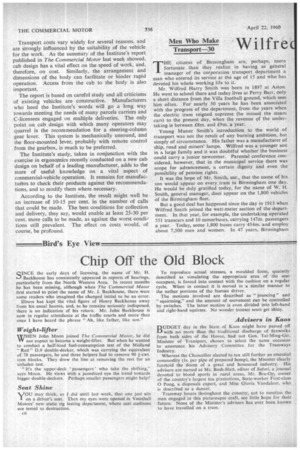What the Operator Ordered
Page 41

Page 42

If you've noticed an error in this article please click here to report it so we can fix it.
A LL operators engaged in multiple deliveries, as well as man ufacturers of vehicles designed for this work, can gain much from the time and motion study conducted by the technical production and costing committee of the Institute of British Launderers. It emphasizes the high cost of collecting and delivering laundry, and the figures quoted may well be appropriate to other industries. In many instances the expense of collecting and delivering domestic parcels of laundry exceeds productive labour costs by anything from one-third to nearly three-quarters_ Transport costs vary widely for several reasons, and are strongly influenced by the suitability of the vehicle for the work. As the summary of the Institute's report published in The,Commercial Motor last week showed, cab design has a vital effect on the speed of work, and, therefore, on cost. Similarly, the arrangement and dimensions of the body can facilitate or hinder rapid operation. Access from the cab to the body is also important.
The report is based on careful study and all criticisms of existing vehicles are constructive. Manufacturers who heed the Institute's words will go a long way towards meeting the needs of many parcels carriers and C-licensees engaged on multiple deliveries. The only point on cab design with which many operators may quarrel is the recommendation for a steering-column gear lever. This system is mechanically unsound, and the floor-mounted lever, probably with remote control from the gearbox, is much to be preferred.
The Institute's study, taken in conjunction with the exercise in ergonomics recently conducted on a new cab design on behalf of a leading manufacturer, adds to the store of useful knowledge on a vital aspect of commercial-vehicle operation. It remains for manufacturbrs to check their products against the recommendations, and to modify them where necessary.
According to the Institute, the result might well be an increase of 10-15 per cent. in the number of calls that could be made. The best conditions for collection and delivery, they say, would enable at least 25-30 per cent. more calls to be made, as against the worst condi= tions still prevalent. The effect on costs would, of course, be profound.
























































































































